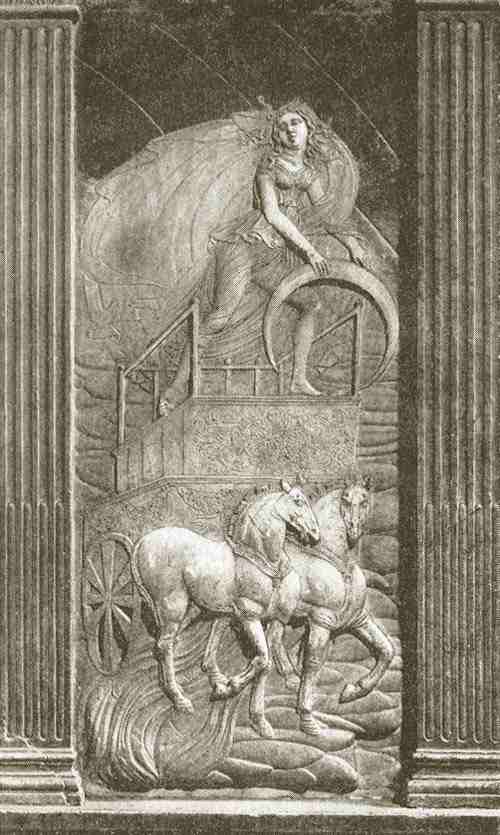A D R I A N S T
O K E S
PREFACE continues
In D. H. Lawrence's Sons and
Lovers - Paul, the artist, could be describing Stokes's art when he describes his own
work as:
More shimmery, as if I'd painted the shimmering
protoplasm in the leaves and everywhere, and not the stiffness of the shape. That
seems dead to me. Only this shimmeriness is the real living. The shape is a dead crust.
The shimmer is inside really.15
Stokes's paintings have been
connected to the reliefs he greatly admired of Agostino di Duccio at Rimini in which the
figures issue like bathers out of the marble. The shimmeriness in Stokes's paint, using Paul's words, suggests a probing just beneath
the surface of the canvas to locate the "real living"; that defining moment
preceding the final emergence of the form. There are architectonic aspects to these works.
To Stokes the canvas is also a wall - an "everyday surface of smooth and rough."
In these paintings there lingers, perhaps, a nostalgia for Giorgione's lost Venetian
frescoes which Ruskin, in Modern Painters, saw "the last traces of ...
glowing, like a scarlet cloud, on the Fondaco de Tedeschi". Despite the formal
variance, they nonetheless share affinities of approach with the "carved"
aspects of Nicholson's reliefs of which Herbert Read wrote:
The shimmeriness in Stokes's paint, using Paul's words, suggests a probing just beneath
the surface of the canvas to locate the "real living"; that defining moment
preceding the final emergence of the form. There are architectonic aspects to these works.
To Stokes the canvas is also a wall - an "everyday surface of smooth and rough."
In these paintings there lingers, perhaps, a nostalgia for Giorgione's lost Venetian
frescoes which Ruskin, in Modern Painters, saw "the last traces of ...
glowing, like a scarlet cloud, on the Fondaco de Tedeschi". Despite the formal
variance, they nonetheless share affinities of approach with the "carved"
aspects of Nicholson's reliefs of which Herbert Read wrote:
"The nearest analogy is
in architecture: the facade. But not facades for a functional building .... Facades
divorced from function, free facades - that is the briefest possible description of
Nicholson's reliefs." 16
Two other names that have been invoked to assess
Stokes's shimmery land and table-scapes are Morandi and Bonnard. Siri Hustvedt has charted
links between Morandi's still lifes, the architectures of Renaissance cities and
Renaissance art - including the background to Giorgione's Tempesta - that seem
particularly suggestive in relation to the interpretation of Stokes's work. 17 David Sylvester
claims Stokes as "a minor artist, but also an authentic one, an exquisite one and a
poetic one. The poetry was that of painting whose manner and matter overlapped with those
of Bonnard and Giacometti but was as English as that of, say Ben Nicholson (with whom
Stokes regularly played tennis - good tennis)." 18 Stokes's art still awaits a full research and interpretation. It should be
noted that, amongst his activities, Stokes put his painting first.
[double click on image to enlarge, then
single click to restore. N.B. sorry - does not work with Netscape browsers]
image © Web Gallery of Art
 The shimmeriness in Stokes's paint, using Paul's words, suggests a probing just beneath
the surface of the canvas to locate the "real living"; that defining moment
preceding the final emergence of the form. There are architectonic aspects to these works.
To Stokes the canvas is also a wall - an "everyday surface of smooth and rough."
In these paintings there lingers, perhaps, a nostalgia for Giorgione's lost Venetian
frescoes which Ruskin, in Modern Painters, saw "the last traces of ...
glowing, like a scarlet cloud, on the Fondaco de Tedeschi". Despite the formal
variance, they nonetheless share affinities of approach with the "carved"
aspects of Nicholson's reliefs of which Herbert Read wrote:
The shimmeriness in Stokes's paint, using Paul's words, suggests a probing just beneath
the surface of the canvas to locate the "real living"; that defining moment
preceding the final emergence of the form. There are architectonic aspects to these works.
To Stokes the canvas is also a wall - an "everyday surface of smooth and rough."
In these paintings there lingers, perhaps, a nostalgia for Giorgione's lost Venetian
frescoes which Ruskin, in Modern Painters, saw "the last traces of ...
glowing, like a scarlet cloud, on the Fondaco de Tedeschi". Despite the formal
variance, they nonetheless share affinities of approach with the "carved"
aspects of Nicholson's reliefs of which Herbert Read wrote: